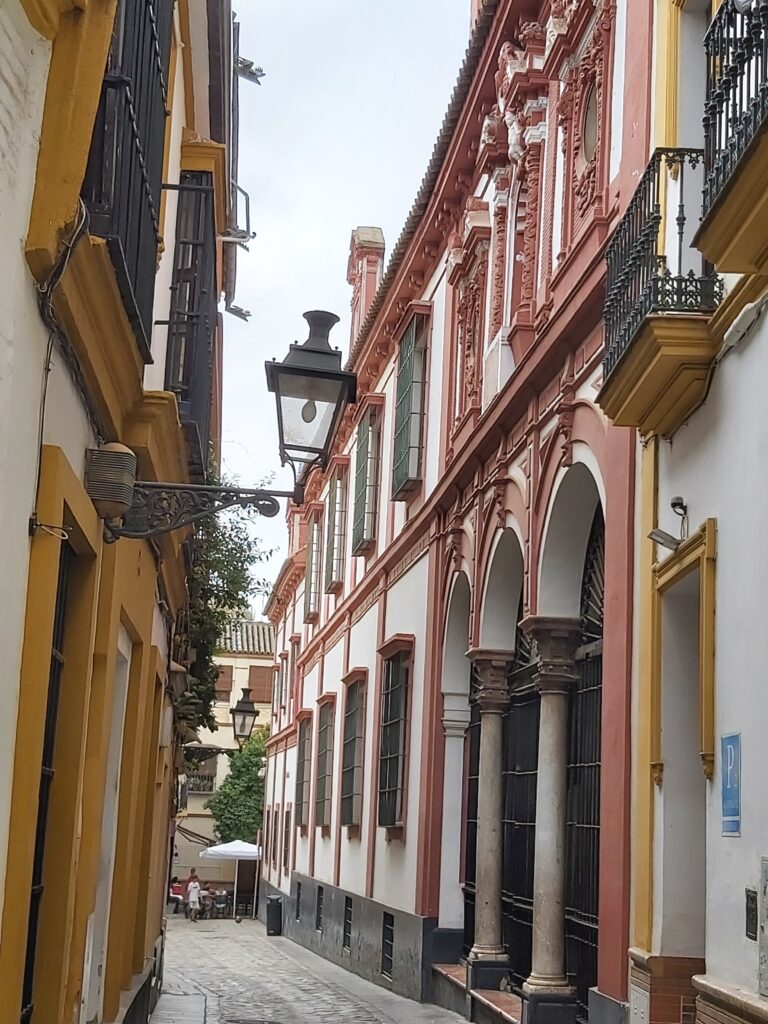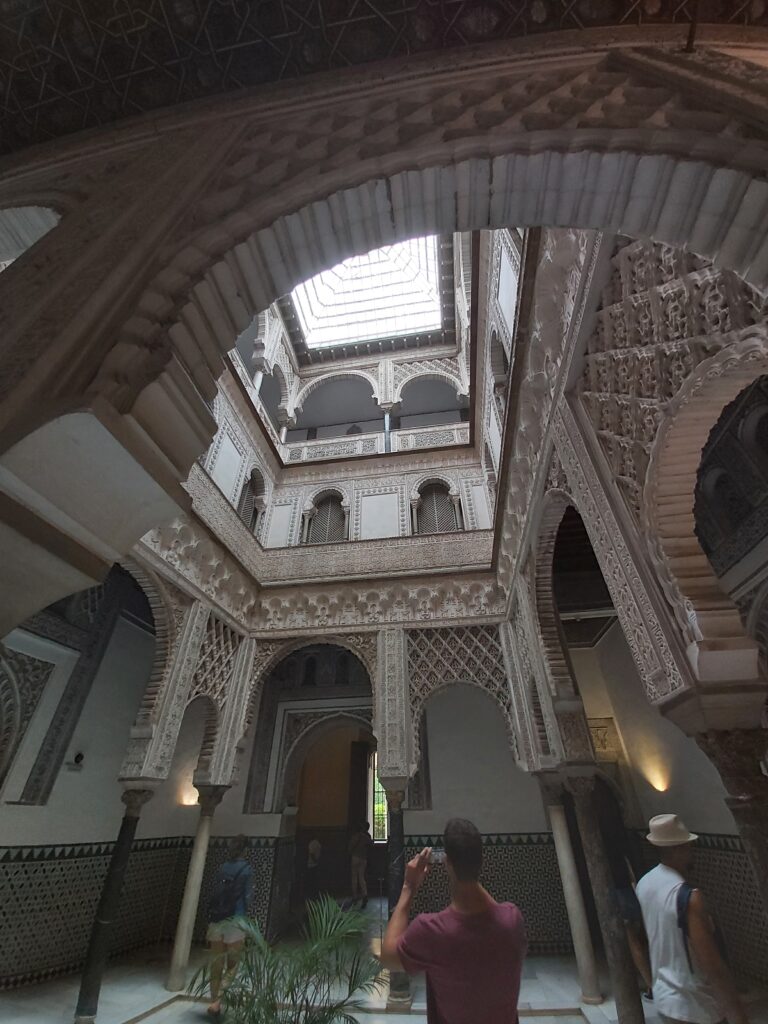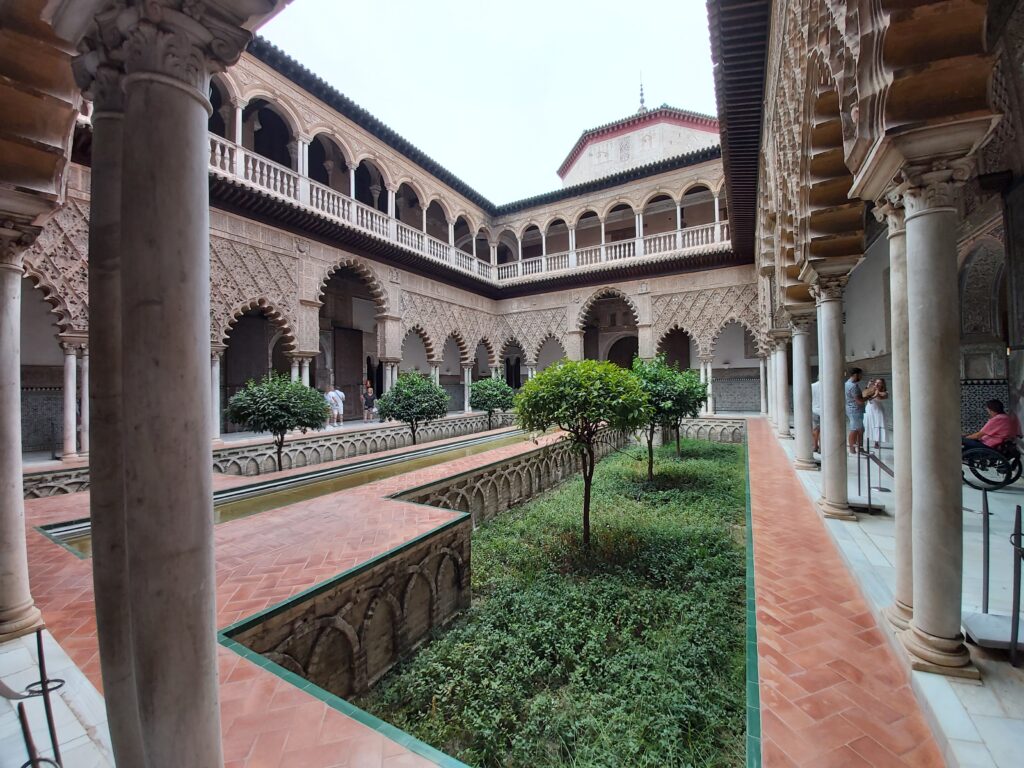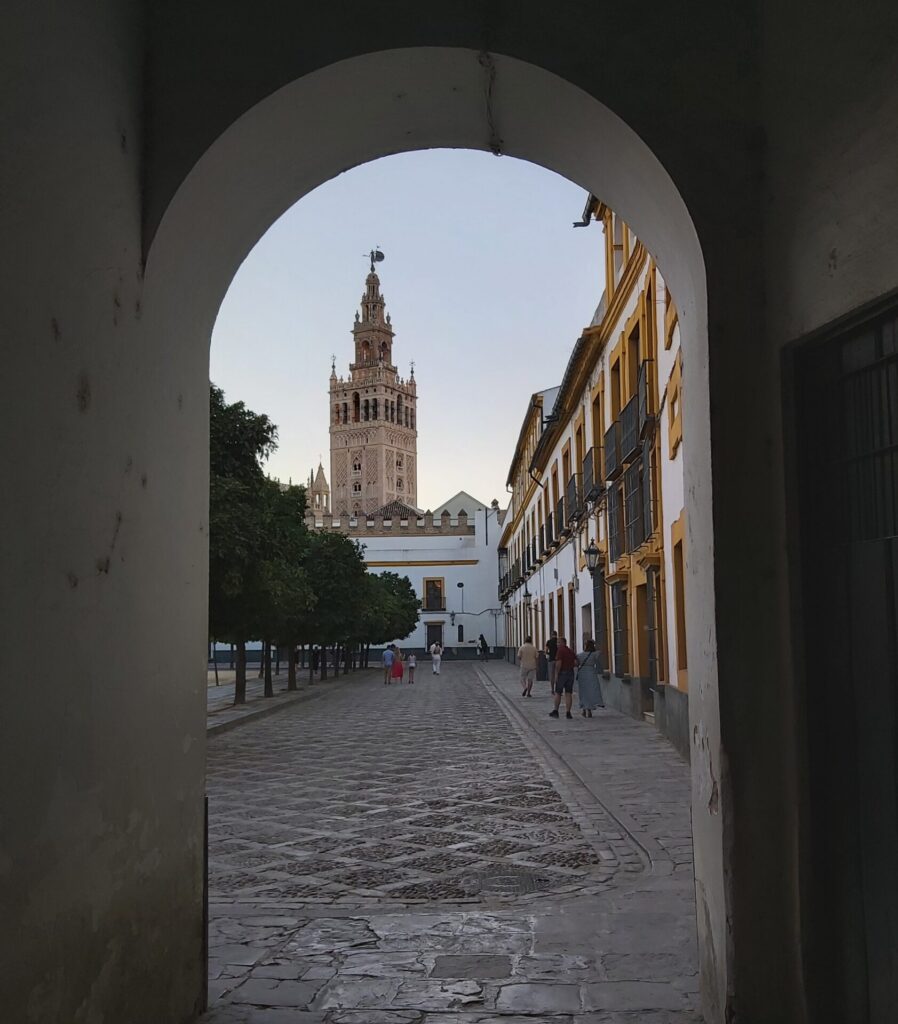Ah, Seville. The capital of Andalucía. That old Iberian town. A Roman port on the Guadalquivir River; access to the Atlantic. Seat of power for the Abbadid and Almohad Dynasties. Fell to the Catholic king in 1248. Trade center with the new world (that’s us) until 1717. Languishing ever since.
Today, Seville is the capital of Andalucía, site of the world’s largest gothic cathedral and the official royal residence of Real Alcázar (Real with a capital R, as in Royal). Its historic center attracts tourists from around the world. Known for bull fighting and Flamenco dancing. OK, maybe it’s not languishing.

My hotel was in the pedestrian-only, historic center, very near the Real Alcázar and the Catedral (Cathedral). It was one of the many, many, many small hotels in the area. Everything in this area is either hotel, restaurant, museum, short-term apartment or tourist shop. I would guess 90% is given over to tourists, and maybe 10% remains for locals. Maybe.
The place is a maze of streets often so narrow that even pedestrians have to pass with care. I spent most of my time trying to remember where my hotel was. The buildings are painted in soft colors, usually a white or cream body with bright pastel accents. Hmm, pastel. The Spanish word for cake!
After my utter failure at the Alhambra, I got online and booked a ticket to tour the Real Alcázar. Success! Not as famous as the Alhambra (unless you’re a Game of Thrones fan), but certainly impressive. It started as a fortification in 913, and evolved into a palace in the 14th century. It is still the official Royal (hence, “Real”) Residence in Seville.

The architecture is a flawless mix of Mudéjar (Moorish) and Christian. The mixed architecture was favored by the Catholic kings. In fact, Catholic kings had inscriptions in Arabic placed prominently around the palace. Like in Granada, the Islamic influence was so ingrained in the local culture, it was naturally embraced by Christians.
I cannot describe the Real Alcázar. It must be witnessed. I will say that what at first appears to be incredibly intricate carvings, are actually incredibly intricate tile mosaics. I imagine that every tile would have to have been flawless, and that somewhere is a pit filled with tiles that didn’t quite make the grade. Probably under the current gardens, which for centuries were dumping grounds for construction debris.

Next on my (pre-booked) tour was a Flamenco show. Love those pink birds! I don’t know anything about Flamenco. Or dance. Or music. But the show was fascinating. Flamenco is an expression of passion: love, hatred, passion, despair. Foot stomping dance with accompanying hand gestures and often fierce facial expressions. The music – guitar and singers – is also crucial. The guitarist was amazing. The singers incomprehensible. Of course, I don’t speak enough Spanish to understand it, or any Andaluz, but I was told that often they aren’t actually signing words anyway. Well worth seeing a Flamenco show. No birds.


Now the Catedral. Built on the site of a mosque, which was damaged in an earthquake, it is the largest Gothic cathedral in the world. And the world’s 3rd largest cathedral. If it wasn’t so large, it would feel a little off in its dimensions. In Seville, as was also the case in Granada, the cathedral is closer to being square. This is because they both were constrained by the older structure on the site. The unusual square-ness makes it a bit disorienting when inside. Where is the high alter? Most churches have a long aisle and a shorter one. The long aisle reaches west to east, and the short one crosses the first. Very traditional symbology.
The cathedral is also the final resting place for Christopher Columbus (aka Cristoforo Colombo, by birth, or Cristóbal Colón in Spain, plus a few more aliases). Love him or hate him, his tomb is over-the-top.
